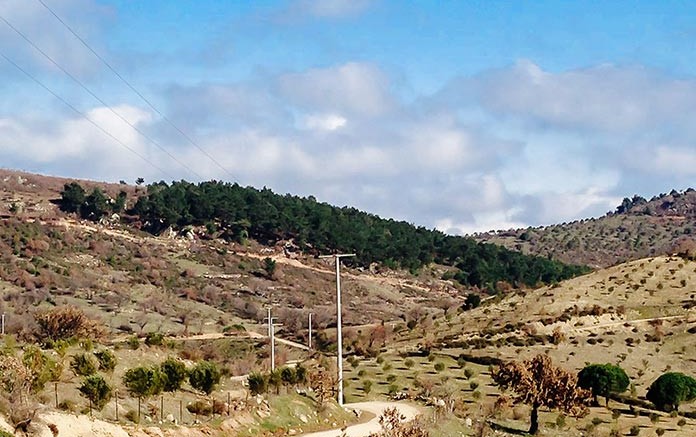VANCOUVER — It’s been almost a decade since Tim Coughlin, a co-founder of Lydian International, was part of the team that stumbled across the multi-million-ounce Amulsar gold deposit in southern Armenia. Now, as president and CEO of Royal Road Minerals (TSXV: KRK.H), he has set his sights on doing it all over again in broadly the same region at the junior’s greenfield Gomec gold property in western Turkey’s Balikesir province.
Formerly known as Tigris Resource, the rebranded Royal Road has released partial results of a 3,000-metre, reverse-circulation drill program at its Kubaslar gold prospect — one of three main targets across the property’s 10 km strike of gold occurrences.
The work is part of a 50% earn-in agreement with private Turkish company Oremine Resources, which owns the property. Royal Road must spend US$2 million on exploration and development at the Gomec, Ugur Tepe and Ispir licence areas to earn a 20% interest, and US$2 million more on such expenditures to earn another 30% interest, in both cases before the end of next year.
Coughlin tells The Northern Miner in a phone interview that what’s most encouraging about the latest results is how homogenous mineralization is downhole, and that “now we just need to find out where it’s focused.”
The drill holes targeted northwest-trending, silicified fault zones hosting higher-grade mineralization that occur within an east-trending package of volcanic rocks with lower-grade, disseminated gold.
This year’s drill program intersected 22 metres grading 3.9 grams gold per tonne, within a larger halo of stratabound, lower-grade gold adding up to 118 metres at 1 gram gold. Other intercepts include 32 metres at 1.1 grams gold, and 36 metres at 1 gram gold.
The results build upon work completed last year, which outlined a 500-metre long mineralization trend, with best intercepts returning 76 metres at 1 gram gold, including 24 metres at 2 grams gold, and 56 metres at 1 gram gold, including 22 metres at 2 grams gold.
Coughlin notes that the longer, lower-grade intercepts reported on the property were calculated with a 0.2-gram-gold cut-off and a 10-metre internal dilution — the normal bench height for an open-pit — and they highlight the bulk-tonnage potential at Kubaslar.
“If you do that consistently in these types of deposits, you finish with 1-gram-tonne intersections,” he says. “But one thing is for certain, these holes are mineralized from top to bottom and rarely get below 0.2 gram gold, and that’s quite remarkable.”
Based on drilling, geophysical surveying and the location of soil anomalies, Coughlin says the target remains open along strike and at depth.
“This is all early stage drilling, so it’s difficult to join the dots,” he adds. “The key is whether we can heap-leach the lower-grade material, strip that off and get down into the higher-grade material.”
He says that below the volcanics on the property is the chemically favourable, carbonaceous basement that’s known to host other deposits in the region.
One such example is Turkey’s largest mining company Koza Gold’s similarly named, nearby Kubaslar gold deposit, which Royal Road says has 115,500 oz. gold at 1.9 grams gold and 800,000 oz. silver at 13.4 grams.
On the geology map of the Gomec property and its environs, Koza’s Kubaslar prospect appears to be bounded on most edges by an intrusive rock called a tonalite. But Coughlin says that geophysical surveying clearly shows the intrusives run parallel to the stratigraphy — referred to as sills — and the favourable basement lies directly underneath.
Coughlin explains that Royal Road’s Kubaslar, and the rest of the Gomec property, is located along the edge of a 20-million-year-old intrusive rock called the Kozak batholith — a defining feature on all Turkish geological maps — which is understood to be the source of gold in the district.
But he says with such potential comes a certain challenge.
“This is a big system, and it needs a lot of money to do it any justice,” Coughlin says. “Four years ago this would’ve been an outstanding asset, and in four years it will be an outstanding asset. Right now we’re just stuck in this uncomfortable middle, but we’re doing all the right things to keep the advance the project, and we’re excited about the results so far.”


Be the first to comment on "Royal Road driven by results at Gomec in Turkey"